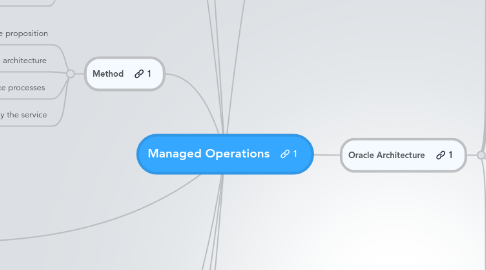
1. ITIL areas
1.1. Service support
1.2. Service delivery
1.3. Planning to implement service management
1.4. Security management
1.5. Information and communications technology (ICT) infrastructure management
1.6. The business perspective
1.7. Application management
1.8. Software asset management
2. DC
2.1. Tech
2.1.1. Independence regarding technologies
2.1.1.1. Virtualization ?
2.1.1.1.1. Only one tech ?
2.2. Process
2.2.1. Schneider - Processus standardisé
2.2.2. ITIL
2.2.2.1. Making ITIL processes work for your data center
2.2.2.2. DataCenter search
2.2.2.2.1. Data center need ITIL?
2.2.2.3. CMMI vs ITIL
2.2.2.4. Configuration management database (CMDB)
2.2.2.5. The practical approach
2.2.2.6. ITIL v3 service transition lifecycle.
2.2.2.7. ITIL Processes
2.2.2.8. ITIL Role
2.2.3. CMMI
2.2.4. Managed services
2.2.4.1. Systemat managed services
2.2.4.2. CISCO
2.3. KPI ?
2.3.1. Scalability
2.3.2. Flexibility
2.3.3. Security
2.3.4. Availability
2.3.5. Economy/Ecology
3. Principes
3.1. cibles : PME
3.1.1. Evaluer les besoins?
3.1.2. Liste des prospets?
3.1.3. concurrence?
3.2. Proposer rapidement une offre
3.2.1. une architecture cible + options
3.2.2. ensemble restreint de technologies / outils
3.2.2.1. one storage, one database type + options
4. services
4.1. monitoring
4.1.1. Troubleshooting
4.2. performance
4.3. alerts
4.4. 24/24 7/7 Avaibility
4.4.1. KPI
4.4.2. Service Desk
4.4.3. Reporting
5. People Competences
5.1. Windows
5.2. UX
5.3. ...
6. Method
6.1. Establish the proposition
6.2. Design the service architecture
6.3. Engineer the service processes
6.3.1. Kaitzen approach
6.4. Deploy the service
7. Targets
7.1. ATOS organizations
7.2. External Customers
8. objefctifs
8.1. Facilité
8.1.1. Proposer un ensemble d'architectures facile à implémenter (reposant sur des modèles éprouvés)
8.2. Productivité
8.2.1. Architecture rapidement mise en oeuvre
8.3. Choix
8.3.1. Le client doit pouvoir choisir son archecture en fonction de ses besoins (on-demand)
8.4. Standards
8.4.1. Les architectures proposées s'appuient sur des standards éprouvés
9. Oracle Architecture
9.1. Couche 0 - Storage
9.1.1. Rebondant
9.1.1.1. Mirroring / Stripping
9.1.2. Recovery On-Demand
9.1.3. Secure
9.1.3.1. Encryption
9.1.3.2. Backups Automatisés
9.1.4. ASM + Storage
9.2. Couche 1 - Database
9.2.1. Une instance par utilisateur
9.2.1.1. New node
9.2.2. Testing (Oracle Replay)
9.2.3. Migration
9.3. Couche 2 - Application Server
9.4. Couche 3 - Outils
9.4.1. Java
9.4.2. APEX + HTML5
9.4.3. SQL
9.4.4. PL/SQL
9.4.5. RESTful Web Services
9.5. Based on Oracle VM
9.5.1. +90 existing templates
9.5.1.1. MySQL, RAC11GR2, Oracle Linux, Solaris ...
9.5.2. All Oracle software is certified (included the database)
9.5.3. Oracle Virtual Assembly Builder
9.5.4. passed Microsoft SVVP requirements for Windows Server
9.5.5. http://www.oracle.com/pls/ebn/swf_viewer.load?p_shows_id=9248934&p_referred=0&p_width=1000&p_height=675
9.5.6. no licenses fees
9.5.7. can easily import existing VM images from MS HyperV and VMware vSphere
9.5.8. Limited Oracle support on VMware and HyperV
